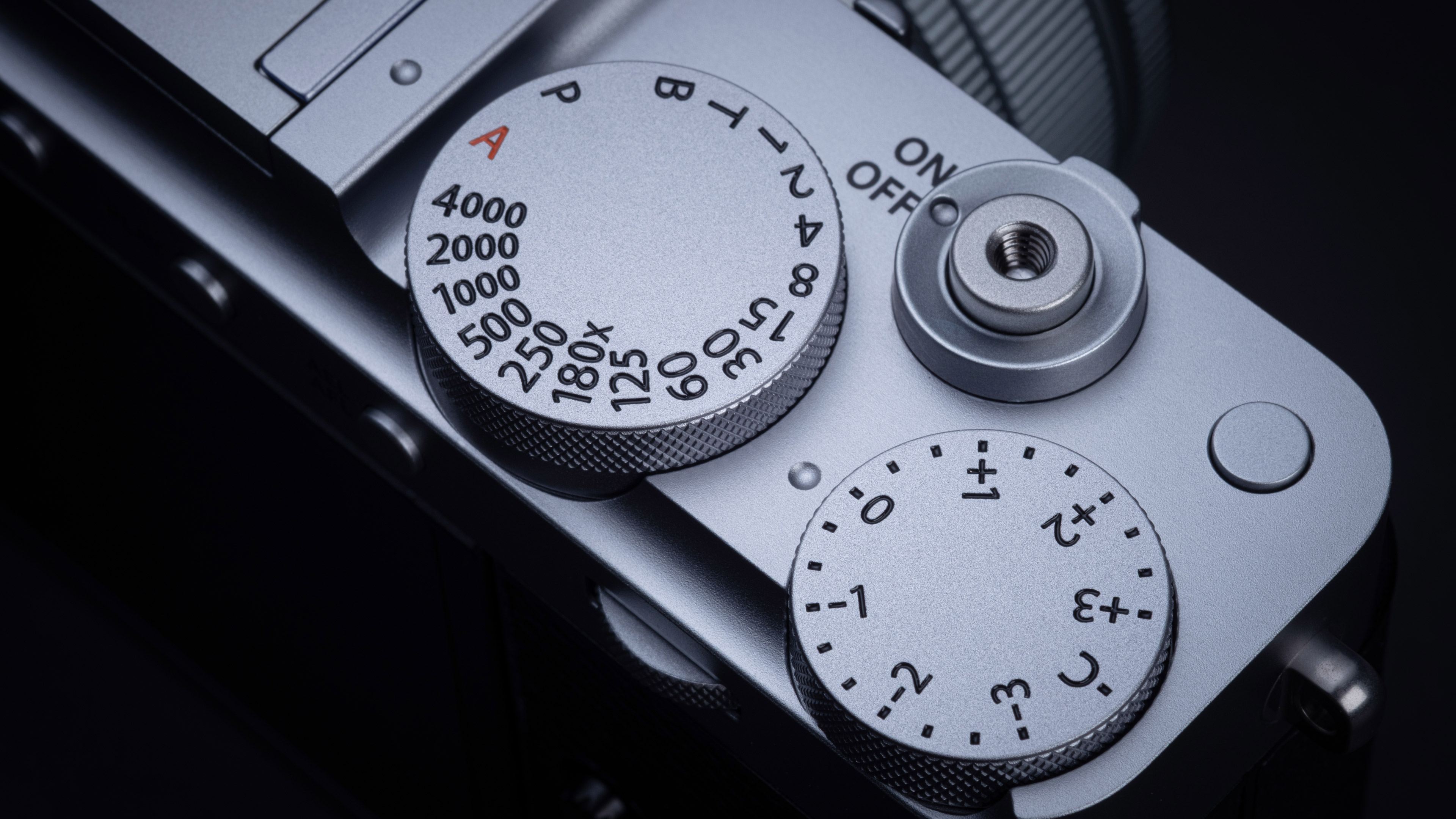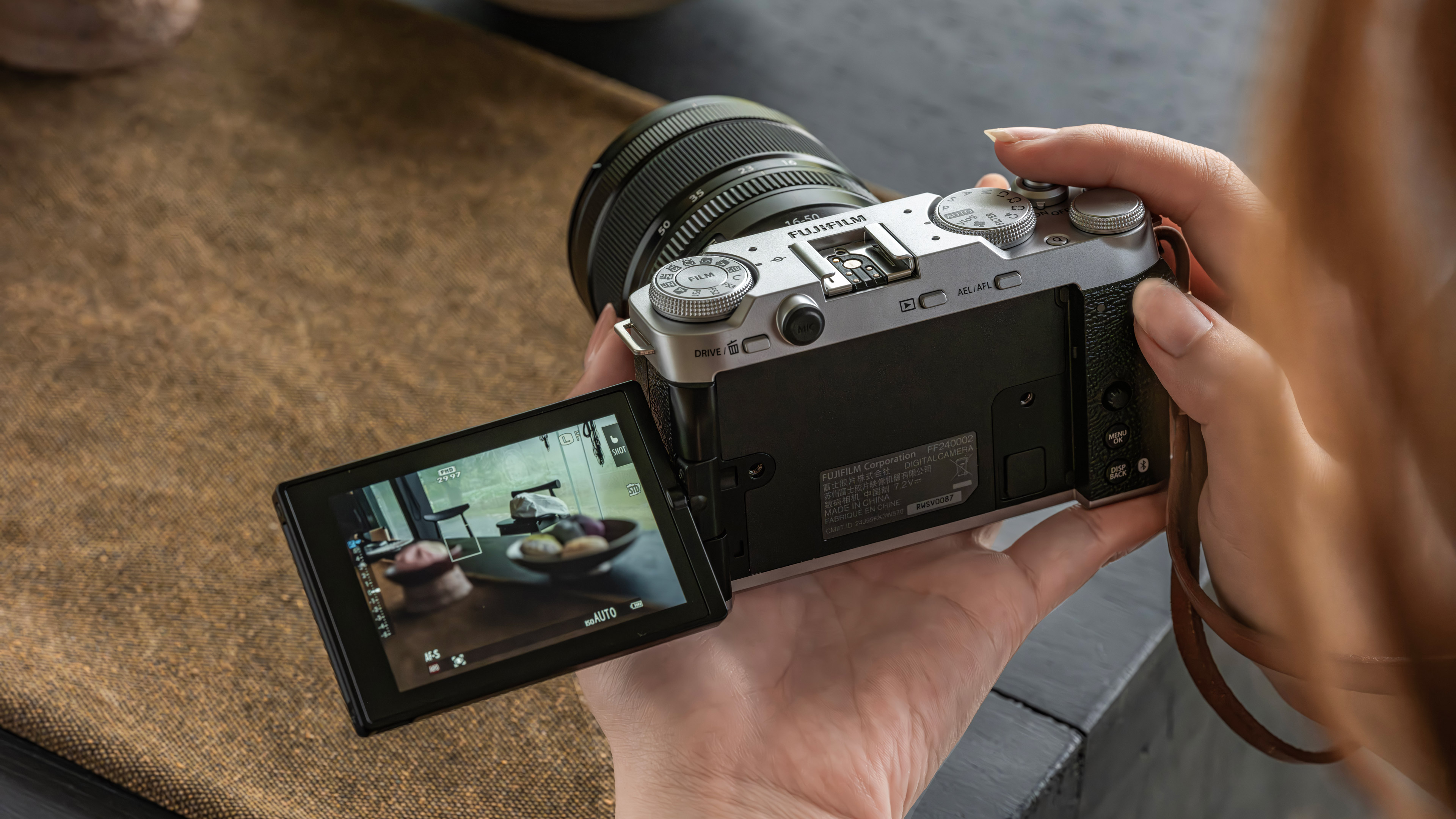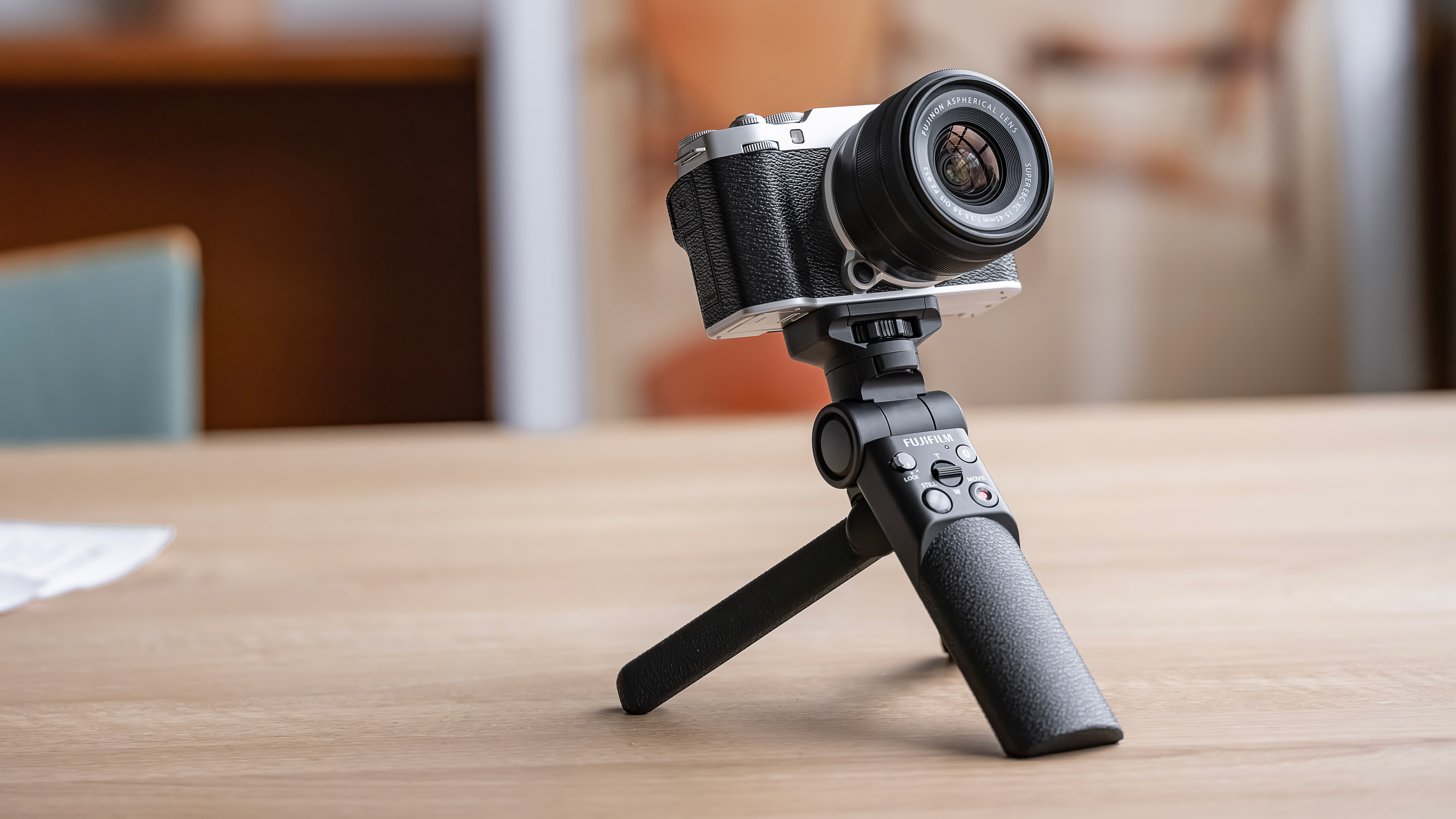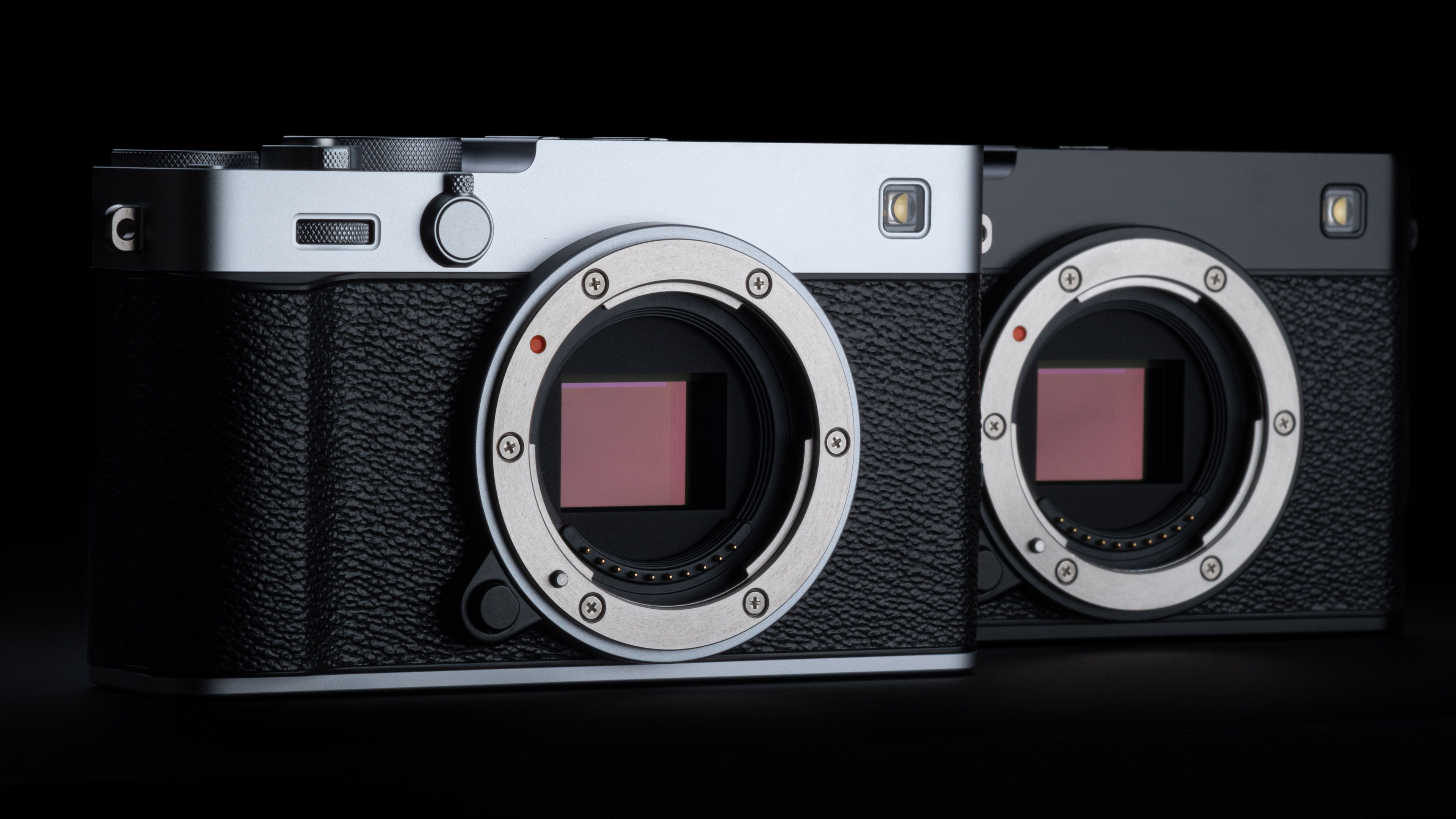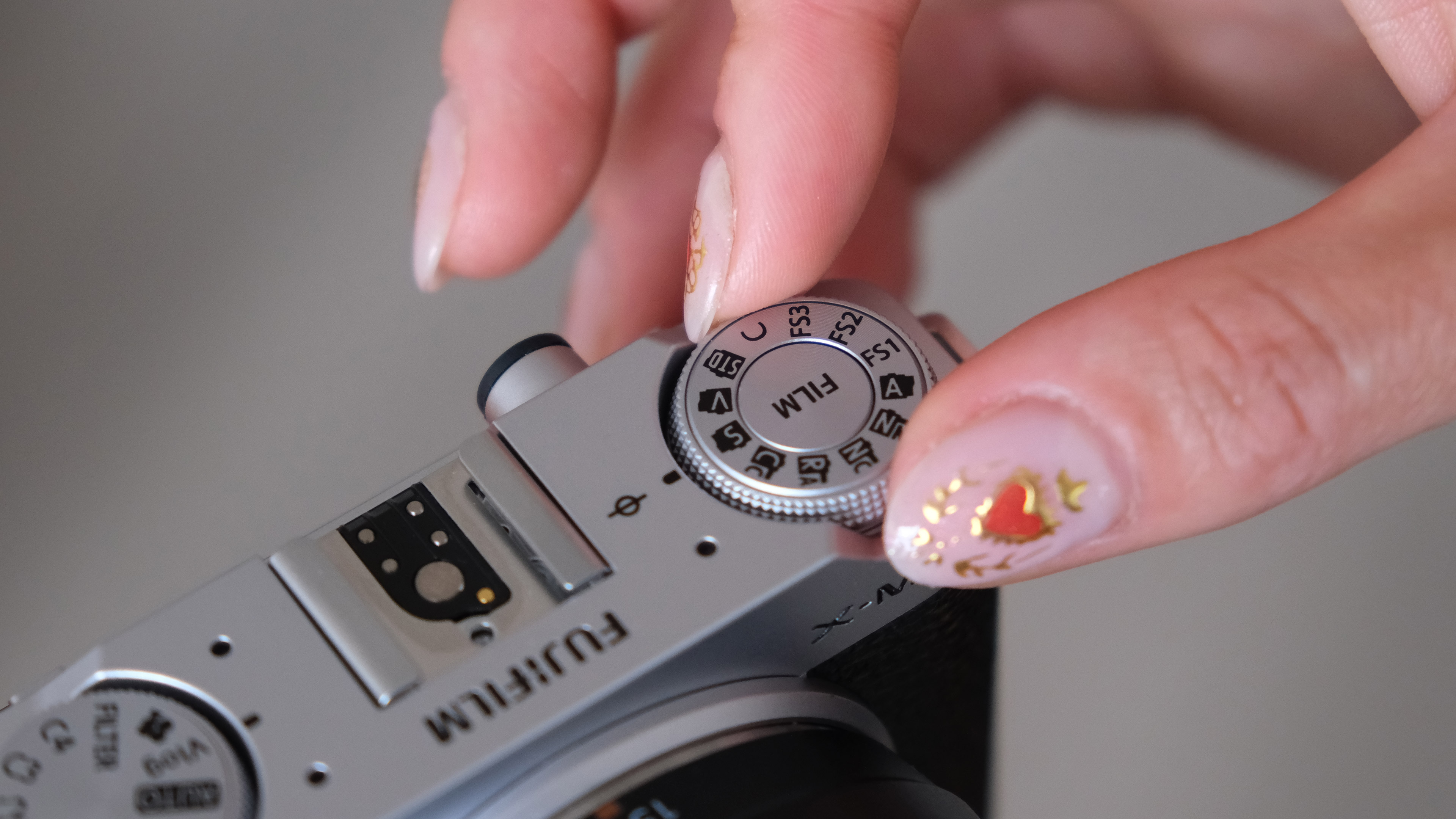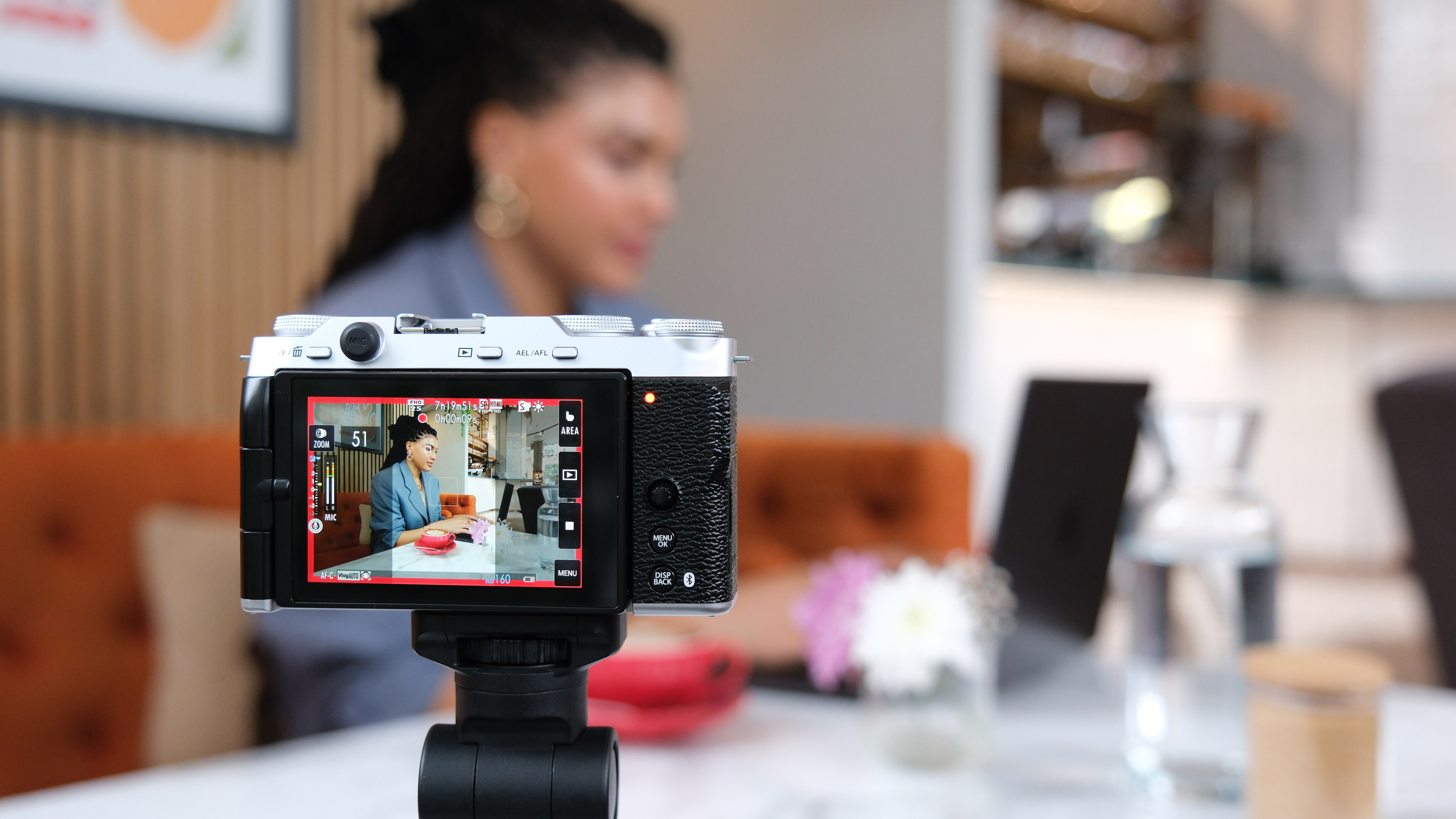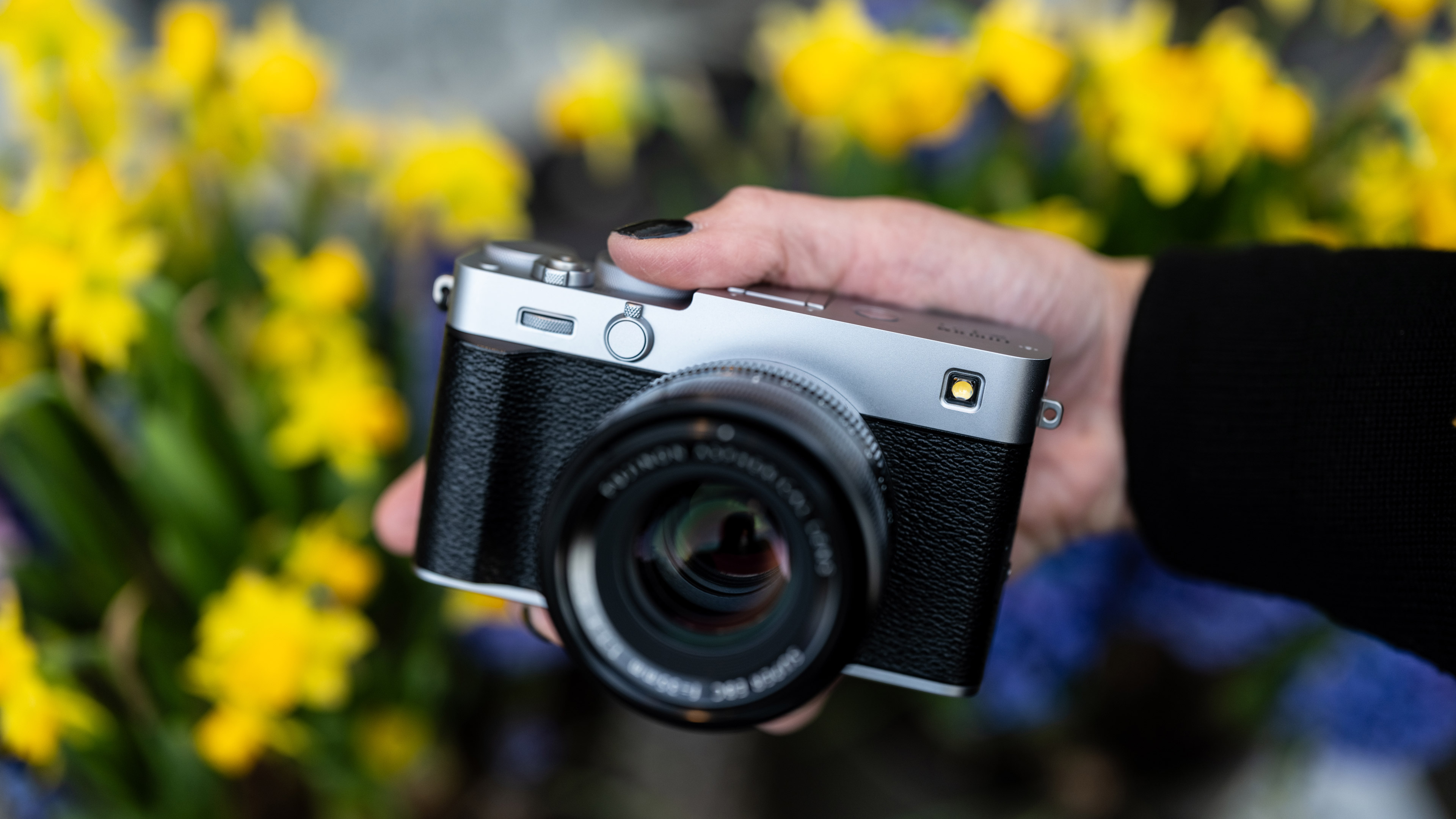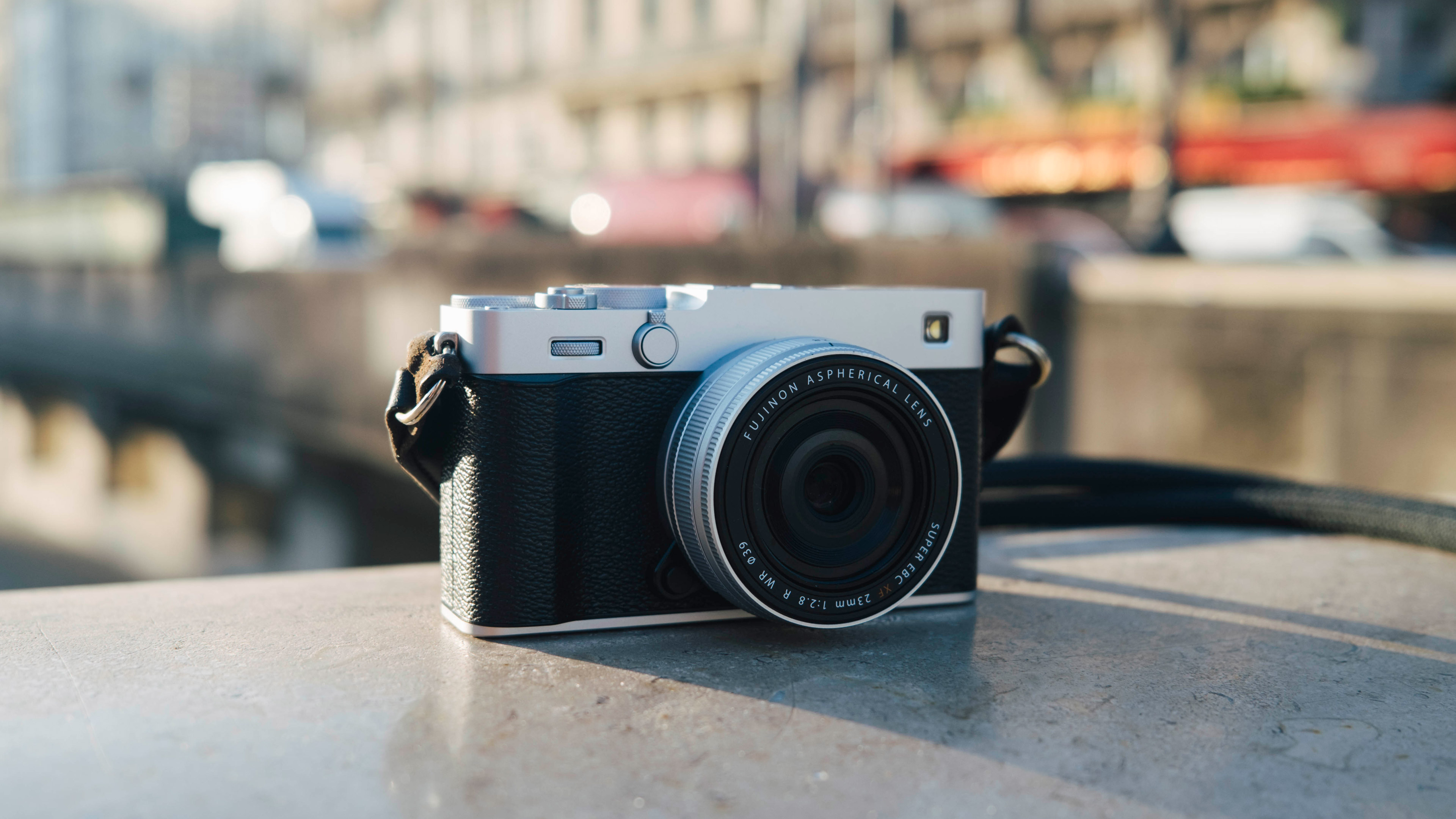Fujifilm X-M5 vs X-E5 – it's a much harder choice than I thought!
Is this just a cheap vlogging camera vs a proper tool for connoisseurs? Actually, there’s a bit more to it than that
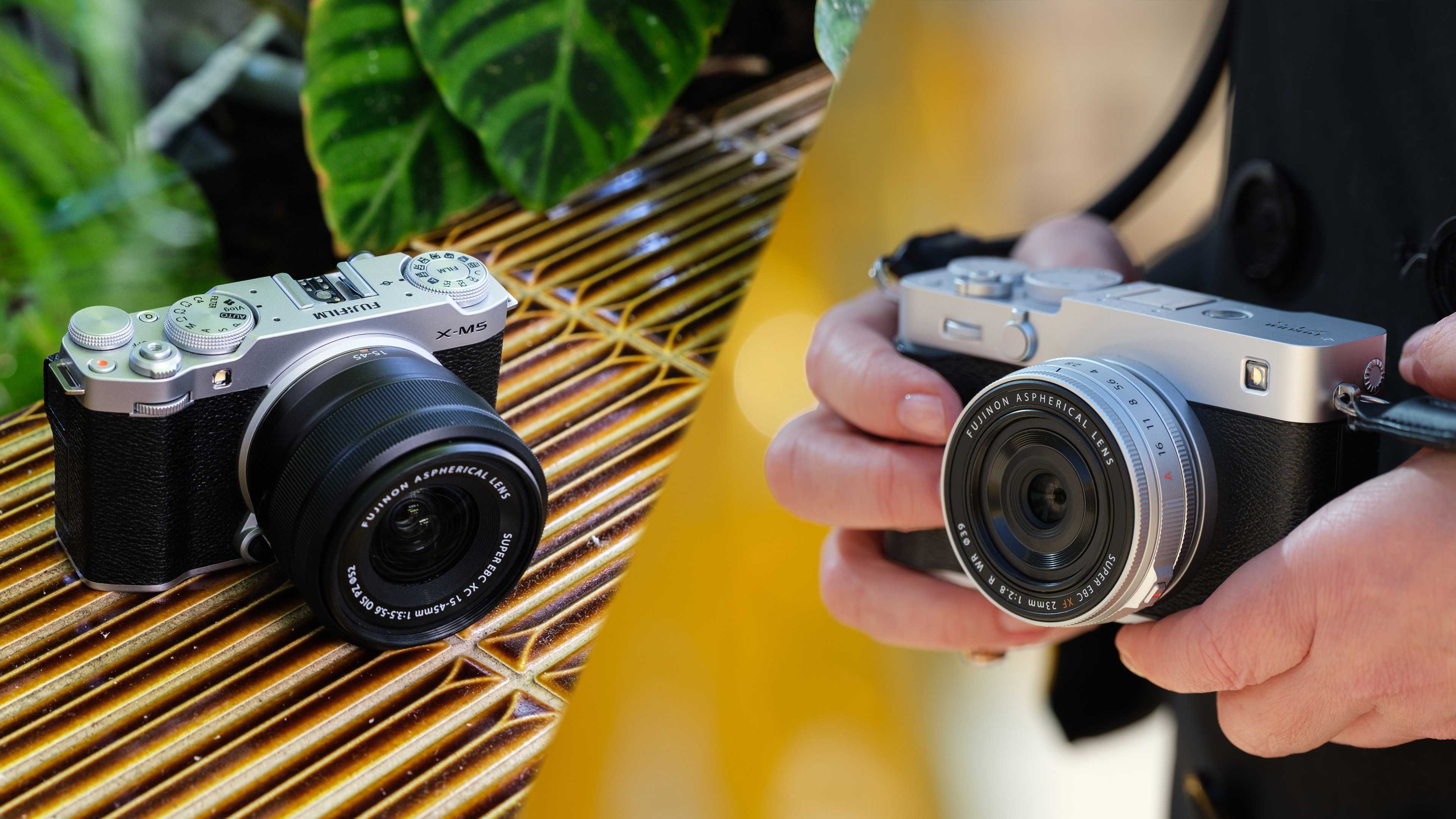
The Fujifilm X-E5 is a very welcome addition to the Fujifilm range, reviving the popular X-E series pocket ‘rangefinder’ design while adding in Fujifilm’s latest 40MP sensor, 5-axis IBIS for the first time in an X-E camera and some powerful video features too.
The Fujifilm X-M5, however, is a much cheaper camera with Fujifilm’s older 26MP X-Trans sensor, no IBIS and no EVF. Surely there’s no comparison against the much mightier Fujifilm X-E5?
In fact, there are a number of reasons why photographers and creators might choose the X-M5 over the X-E5. The price difference is the most obvious factor, but there are others. One is the cheaper camera’s vari-angle screen, smaller size, lighter weight and the fact that it matches the X-E5 for video features and autofocus and offers the same range of 20 Film Simulations. It’s even a little faster for burst shooting (30fps vs 20fps).
The X-E5 is obviously the better camera for stills photographers, particularly those who like its retro exposure dials, and it can hold its own amongst the best hybrid cameras for video capabilities too.
But not everyone wants separate exposure dials. Some have got used to a regular mode dial layout and prefer it. Not everyone shoots with an EVF, and the X-M5’s lower cost and manoeuvrability might appeal to creators shooting in busy, fast-moving environments where it’s not always easy to cosset your camera. These look set to be two of the best Fujifilm cameras to buy in their own way, but are designed for quite different audiences.
So let’s take a closer look at the specifications of these two cameras to see where the main differences lie, and where there are some surprising similarities and some surprising little victories for the cheaper camera.
Fujifilm X-M5 vs X-E5 in 2025
Why you can trust Digital Camera World
1. Design
• Fujifilm X-M5: Compact rangefinder style, regular dials
• Fujifilm X-E5: Rangefinder style, traditional dials
These two cameras have a broadly similar design. Both are rectangular compact rangefinder style cameras. When you see and handle them in the flesh, however, the differences become very apparent. The X-M5 is a very small camera whereas the X-E5 is noticeably bulkier. The X-E5 is actually something of a surprise compared to the X-E4 before it, and the addition of IBIS gives it a heftier, ‘fatter’ feel.
The other key difference in the design is the control layout. The X-M5 uses a generic mode dial control layout as found on countless other cameras, but the X-E5 has a shutter speed dial on the top and, in conjunction with Fujinon lenses that have aperture rings, offers traditional exposure dials, which is a feature that has drawn many retro camera fans to the Fujifilm brand.
2. Viewfinder/screen
• Fujifilm X-M5: No EVF, 3-in vari-angle touchscreen, 1.04m dots
• Fujifilm X-E5: 0.39 in OLED EVF, 2.36m dots, 100% coverage, 0.62x magnification, 3-in tilting touchscreen, 1.04m dots
There is another key difference. The Fujifilm X-E5 has an electronic viewfinder, but the X-M5 does not. With the X-M5 you have to compose images on the rear screen. That might not be an issue for video shooters, but it could be an annoyance for stills photographers.
The rear screens on these two cameras are the same, so the extra cost of the X-E5 is not on show here. What’s different is that the X-M5’s screen has a vari-angle pivot, but the X-E5’s screen has a simpler tilting movement. The X-M5 is going to offer more flexibility in shooting angles, especially for video.
3. Stabilization
• Fujifilm X-M5: No, IBIS, digital IS only
• Fujifilm X-E5: 5-axis IBIS, 7 stops compensation center, 6 stops periphery
In-body stabilization may be a deal-breaker for some photographers and content creators. The Fujifilm X-E5 has it, but the X-M5 does not. The lack of IBIS in the cheaper camera will affect low-light handheld shooting, and walk-and-film video styles. The X-M5 does have digital stabilization, which can be pretty effective in itself, but otherwise you might need turn more to tripods or a stabilizing gimbal – though a lot of creators film this way anyway, and if you do too then the lack of IBIS may not be so serious after all.
4. Sensor
• Fujifilm X-M5: 26MP APS-C X-Trans 4, X-Processor 5
• Fujifilm X-E5: 40MP APS-C X-Trans 5 HR, X-Processor 5
The Fujifilm X-E5 has Fujifilm’s latest 40MP X-Trans 5 sensor, while the X-M5 has its older 26MP X-Trans 4 sensor. The increased resolution is a technical advantage for the X-E5, though it’s worth pointing out that it’s really only the best Fujifilm lenses that are likely to do full justice to the extra resolution – and the 26MP X-M5 still offers a very decent resolution for an APS-C camera.
5. ISO range
• Fujifilm X-M5: ISO 160-12,800, exp 80-51,200
• Fujifilm X-E5: ISO 125-12,800, exp 64-51,200
The newer generation sensor in the X-E5 effectively matches the ISO range of the X-M5, even with the increase in megapixels. It also offers a slightly lower minimum sensitivity. Both cameras are evenly matched here, and there’s no ISO penalty for the higher resolution sensor of the X-E5.
6. Autofocus
• Fujifilm X-M5: Hybrid AF with subject detection, up to 25 x 17 zones
• Fujifilm X-E5: Hybrid AF with subject detection, up to 25 x 17 zones
These two cameras have the same subject-detect autofocus features too, aided by the same X-Processor 5 hardware. Perhaps the key takeaway here is that the X-M5 matches the X-E5, even though it’s considerably cheaper.
7. Stills
• Fujifilm X-M5: 6,240 x 4,160px, 20 Film Simulations
• Fujifilm X-E5: 7,728 x 5152px, 20 Film Simulations
The difference between 26MP and 40MP sounds a lot, but as you’ll see from the still image pixel dimensions, it corresponds to a relatively modest 24% increase in horizontal and vertical resolution. Both cameras offer the same number (20) of different Fujifilm Film Simulations too. On the X-5 these can be selected via a dedicated dial on the top, while on the X-E5 the dial is less obtrusive and seen through a small window on the top plate.
8. Continuous shooting
• Fujifilm X-M5: 8fps mechanical, 82 compressed raw, up to 30fps electronic with 1.25x crop, up to 78 compressed raw
• Fujifilm X-E5: 8fps mechanical, 79 compressed raw, 20fps electronic, 1.29x crop, 66 compressed raw
You probably wouldn’t choose either of these cameras for high-speed burst shooting, but if you did you would find them pretty evenly matched. Both can shoot at 8fps with their mechanical shutters but much faster with their electronic shutters. Here, the cheaper X-M5 edges ahead with speeds up to 30fps with a 1.25 crop, vs 20fps for the X-E5 with a 1.29x crop.
9. Video
• Fujifilm X-M5: 6.2K open gate 30p, 4K/4K DCI up to 60p, FHD up to 240p
• Fujifilm X-E5: 6.2K open gate 30p, 4K/4K DCI up to 60p, FHD up to 240p
These two cameras are very evenly matched for video. It’s perhaps impressive that the X-E5 can match the X-M5’s resolutions and framerates despite its higher resolution sensor. Another way to look at it, though, is that for video the X-M5 does everything that the much more expensive X-E5 can (except IBIS).
In practice, though, the X-E5 is clearly set up for stills photography with the video features on hand if you need them. The X-M5, though, is much more of a hybrid device, with the video capabilities very much to the fore in its design and layout. The vari-angle screen is one key advantage, the easy vertical shooting mode another, and there’s a Vlog setting on the mode dial to make video capture easier still.
There’s one other small detail. Both cameras have mic sockets, but the X-M5 also has a headphone socket for audio monitoring, and carefully positioned port placements so that the vari-angle screen won’t get obstructed by cables when it’s flipped out for filming.
10. Size and weight
• Fujifilm X-M5: 119 × 66.6 × 38mm, 355g
• Fujifilm X-E5: 124.9 x 72.9 x 39.1mm, 455g
On paper, these two cameras look pretty close for both weight and dimensions. When you pick them up and handle them, though, they feel very different. The Fujifilm X-M5 is unexpectedly small and light, while the X-E5 feels a good deal bigger and heavier. The X-E5 is still not a big camera by any means, it’s just that the X-M5 makes it feel like one!
11. Battery
• Fujifilm X-M5: NP-W126S, 440 shots
• Fujifilm X-E5: NP-W126S, 400 shots
Both cameras use Fujifilm’s NP-W126S lithium ion cell. It lasts just a little longer in the X-M5, perhaps because it’s not powering an EVF. Strangely, we do see that EVFs routinely consume more power in mirrorless cameras than the rear screens.
12. Price
• Fujifilm X-M5: $799 / £799 body only
• Fujifilm X-E5: £1,699 / £1,299 body only
It’s difficult to get away from the fact that in the US the Fujifilm X-E5 is currently twice the price of the X-M5. The difference is smaller in the UK, but still substantial. Many photographers will feel that its extra resolution, IBIS and EVF justify that price difference, which is a fair observation. If those things are important to you, then you can rule out the X-M5 straight away. But if you’re more interested in hybrid content creation, the X-M5’s price is extremely compelling.
Fujifilm X-M5 vs X-E5: conclusions
It seems pretty clear that in designing the X-E5, Fujifilm wanted to make its new rangefinder style camera as good as it could possibly be. There’s not much doubt that it’s succeeded. This inevitably brings a price premium, not least compared to the more modestly-priced X-E4 and X-E3 before it. But if you want the best, that’s what it takes.
The Fujifilm X-M5 is remarkable in a different way. It’s an unexpectedly small camera with excellent video capabilities, a whole raft of Fujifilm’s trademark Film Simulations, the latest subject detect autofocus and a vari-angle screen. You get a lot for your money without feeling corners have been cut. For hybrid shooters, the X-M5 already makes more sense, even without the price difference.
Good luck choosing!
Today's best prices
The best camera deals, reviews, product advice, and unmissable photography news, direct to your inbox!

Rod is an independent photography journalist and editor, and a long-standing Digital Camera World contributor, having previously worked as DCW's Group Reviews editor. Before that he has been technique editor on N-Photo, Head of Testing for the photography division and Camera Channel editor on TechRadar, as well as contributing to many other publications. He has been writing about photography technique, photo editing and digital cameras since they first appeared, and before that began his career writing about film photography. He has used and reviewed practically every interchangeable lens camera launched in the past 20 years, from entry-level DSLRs to medium format cameras, together with lenses, tripods, gimbals, light meters, camera bags and more. Rod has his own camera gear blog at fotovolo.com but also writes about photo-editing applications and techniques at lifeafterphotoshop.com
